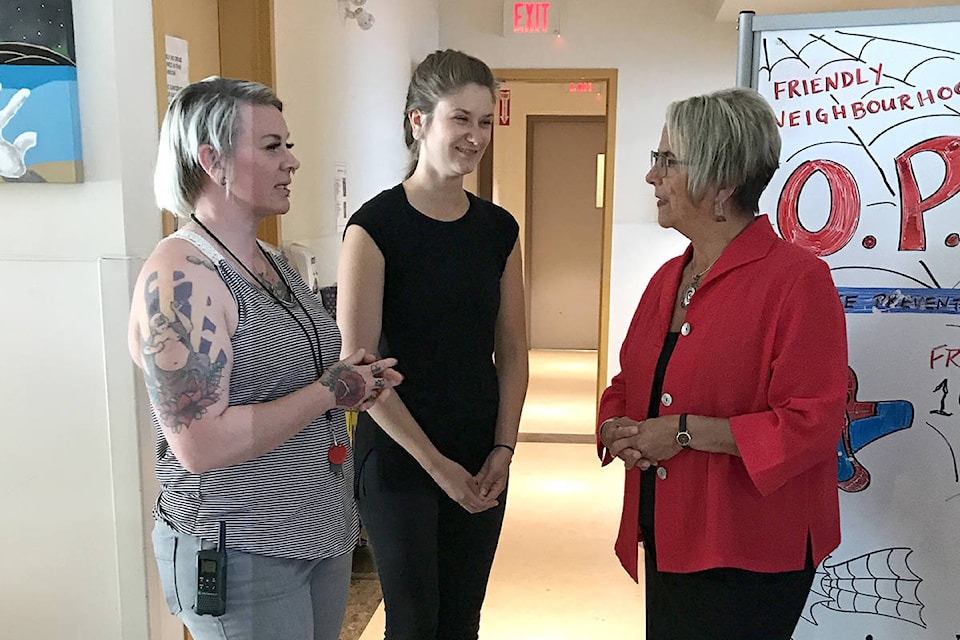Being able to handle a crisis is a leadership trait. Lives depend on how our decision-makers cope with the killer drug fentanyl and the public health emergency that exists.
All levels of government, our health authorities, justice system, emergency services and social services are addressing the problem. A lot of us wring our hands and care. It’s B.C.’s new ministry of mental health and addictions, though, that many will be observing and judging, awaiting action and impact.
Creating the new ministry was an NDP (and Green) campaign promise, it was fulfilled, and that was the easy part. Minister Judy Darcy immediately got to work exploring Vancouver’s Downtown Eastside and other places in B.C. where fentanyl is causing harm and death, which is to say everywhere.
- RELATED: Fentanyl-linked overdose deaths soar in B.C.
Darcy was in Nanaimo last month as part of a provincewide fact-finding mission. While here, she visited the Snuneymuxw health centre, Central Island Access Services at Brooks Landing and the supervised consumption site on Wesley Street. She talked to front-line health-care workers, local politicians, and people with mental illnesses and addictions and their families.
“Those are the people I need to listen and learn from about what’s working, about what isn’t working and about what needs to change,” Darcy said.
It takes all those perspectives to try to comprehend the crisis and how fentanyl overdoses become the end result of so many different starting points.
“People are turning to illicit street drugs for a reason. They are numbing the pain and sometimes that’s physical pain, sometimes it’s psychological pain,” the minister said. “So we need to understand how people get to this place.”
She’s hearing a lot of the same themes, like the need for more public education. She said the message has to get across that street drugs are contaminated, and RCMP have warned how randomly distributed ‘hotspots’ in fentanyl can make dosages chillingly unpredictable.
The minister said mental illnesses need to be better identified and addressed before conditions worsen. There need to be more supports in schools. Poverty reduction and supportive housing have to be part of the solution, because hopelessness and drug use come with living on the streets.
After any overdose, said Darcy, there’s opportunity to surround someone with treatment, counselling, access to housing and employment advice.
“They can get on the path to wellness and in many cases on the path to recovery,” she said.
Darcy said B.C.’s existing mental health and addiction system isn’t really a system because it’s unco-ordinated, with wait lists and double standards depending on ability to pay for private treatment. That all may be true, and it’s important to recognize systemic problems, but it’s obvious we need help to come from many different directions. If solutions are scattered, so be it.
The minister told me she wakes up in the middle of the night thinking about the fentanyl crisis. She has a no-win mandate, in a way – it’s hard to celebrate successes when we consider what the failures mean.
Some people will overdose and get second chances. Some won’t. What’s most important, I think, is to start saving lives before ever needing the naloxone.
